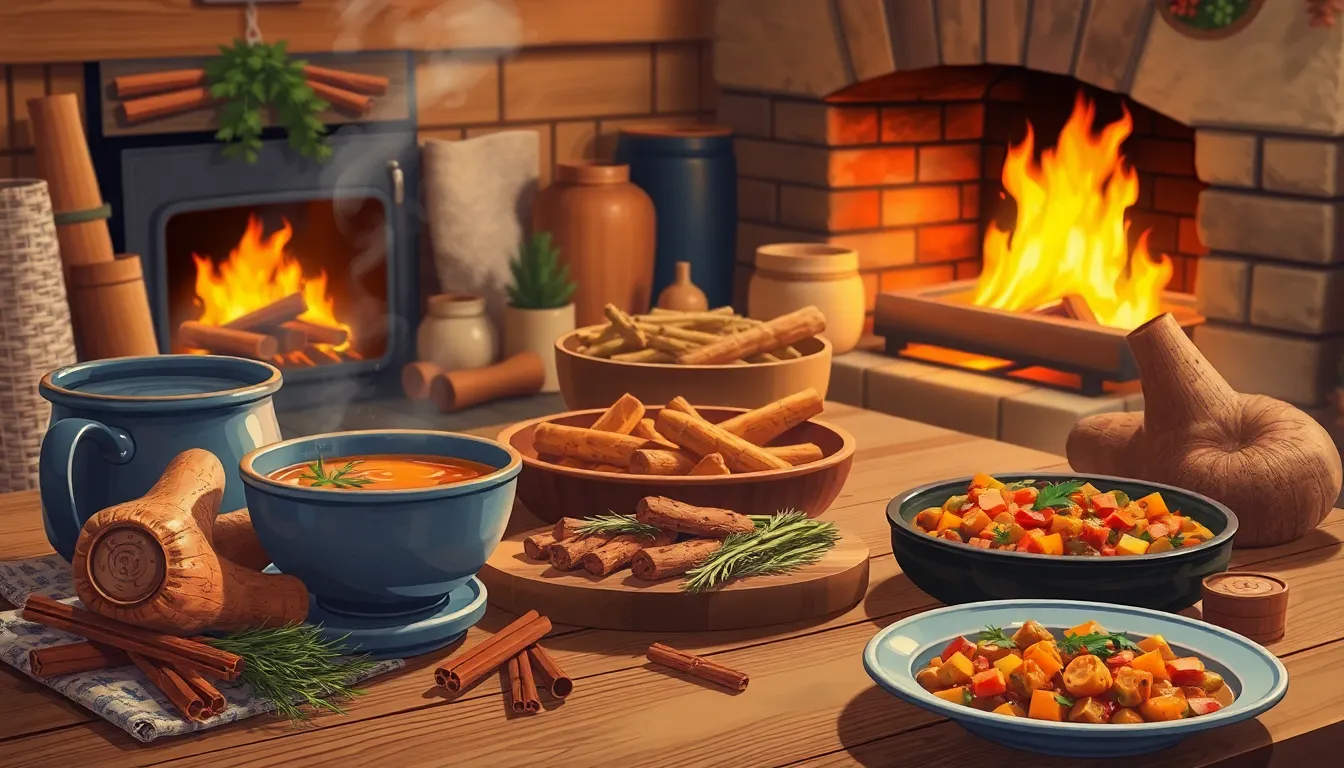Table of Contents
ToggleImagine biting into a dish that dances on your taste buds like a well-rehearsed ballet. That’s the magic of flavor layering focus. It’s not just about throwing ingredients into a pot and hoping for the best; it’s an art form that transforms ordinary meals into unforgettable culinary experiences.
Understanding Flavor Layering Focus
Flavor layering creates complex taste profiles in dishes, transforming simple meals into memorable experiences. This technique emphasizes thoughtful construction of flavors, ensuring balance and harmony.
Definition and Importance
Flavor layering involves combining different ingredients at various stages of cooking to achieve a rich and nuanced taste. This approach enhances the overall dining experience and allows chefs to showcase their creativity. Properly layered flavors can elevate a dish from mundane to extraordinary, capturing the attention of diners. Achieving depth in flavor fosters a satisfying culinary journey, as each bite reveals new aspects of the dish.
Key Components of Flavor Layering
Understanding key components is crucial for effective flavor layering. Ingredients such as aromatics, acids, spices, and umami elements contribute to a dish’s complexity. Beginning with aromatics builds a flavor base that serves as the foundation. Adding acids brightens flavors, providing balance and freshness. Spices introduce warmth, while umami elements deepen the taste experience. Combining these components strategically ensures that each layer supports and complements the others, leading to an inviting and versatile dish.
Techniques for Achieving Flavor Layering
Flavor layering techniques enhance dishes through a careful construction of taste. Several methods contribute to achieving a well-balanced and complex flavor profile.
Balancing Flavors
Balancing flavors involves creating harmony between sweet, salty, bitter, and sour components. Chefs often adjust seasoning throughout the cooking process. Adding a pinch of salt can elevate sweetness, while a splash of acid brightens overall flavor. Tasting continuously allows chefs to refine a dish, ensuring no single flavor overwhelms the others. Acidic ingredients, like citrus juices or vinegars, counterbalance richness in fatty dishes. Mastery of these elements culminates in a cohesive dish that intrigues the palate.
Utilizing Herbs and Spices
Utilizing herbs and spices adds depth and dimension to meals. Fresh herbs release aromatic oils that brighten flavor profiles. Incorporating herbs at the end of cooking preserves their vibrancy. Whole spices, when toasted, unlock natural oils and enhance flavor intensity. Spices such as cumin or coriander contribute warmth and complexity. Blends like garam masala introduce multiple flavors without overwhelming the dish. Adjusting quantities carefully ensures balance, allowing each ingredient to shine while creating an intricate flavor experience.
Examples of Flavor Layering
Flavor layering finds expression in various dishes, revealing the technique’s versatility and impact. Several examples effectively highlight the art of combining flavors.
Dishes That Showcase This Technique
Sichuan Mapo Tofu exemplifies flavor layering through its mix of silken tofu, spicy bean paste, and scented oils. The dish balances heat and umami, captivating taste buds. Tacos al Pastor showcase layered flavors with marinated pork, pineapple, and cilantro. These ingredients create vibrant contrasts that delight diners. A classic French Coq au Vin uses aromatic herbs, red wine, and mushrooms to deepen flavor, resulting in a rich sauce. Risotto, when prepared with broth and finished with parmesan, showcases creamy texture alongside savory depth.
Success Stories from Chefs
Chef Thomas Keller emphasizes flavor layering in his iconic dishes at The French Laundry. He develops complex profiles by combining seasonal ingredients and techniques. Chef Niki Nakayama at n/naka layers Japanese flavors meticulously. Each course reflects harmony, incorporating contrasting tastes through rice, vegetables, and oil. Chef Grant Achatz from Alinea utilizes this technique to elevate modernist cuisine. His inventive approach incorporates unexpected flavor combinations, crafting memorable dining experiences. Other chefs, like Gabrielle Hamilton at Prune, creatively blend traditional elements, earning acclaim for their innovative layering styles.
Challenges in Flavor Layering
Flavor layering presents challenges that affect the execution of culinary techniques. Successful flavor layering requires a deep understanding of ingredient interactions and timing.
Common Mistakes to Avoid
Mistakes in flavor layering can sabotage even the best intentions. Chefs often overlook seasoning adjustments throughout the cooking process, leading to flat meals. Ignoring ingredient compatibility results in conflicting flavors that can overwhelm the palate. Additionally, adding fresh herbs too early can diminish their vibrancy, reducing their intended impact. Relying solely on one flavor component may create an unbalanced dish, lacking depth. Recognizing these pitfalls helps chefs refine their approach to layering flavors effectively.
Overcoming Flavor Imbalance
Overcoming flavor imbalance calls for strategic adjustments and a keen palate. Balancing sweet, salty, bitter, and sour elements remains crucial for harmony. Incorporating acid at the right moment can brighten flavors, bringing them into focus. Gradually building flavors through taste testing allows chefs to gauge dish progression. Using complementary spices enhances complexity and keeps the taste experience intriguing. Implementing these strategies ensures that dishes resonate well, providing inviting flavors that captivate the diners’ senses.
Flavor layering is a transformative technique that elevates culinary creations to new heights. By thoughtfully combining ingredients at different stages of cooking, chefs can craft dishes that are not only complex but also inviting. This method encourages creativity and showcases the vibrant interplay of flavors that can captivate any palate.
Emphasizing balance among sweet, salty, bitter, and sour components ensures a harmonious dining experience. With the right adjustments and a keen understanding of ingredient interactions, chefs can overcome challenges and create memorable meals that resonate with diners. The art of flavor layering is an essential skill that enriches the culinary landscape, inviting both chefs and home cooks to explore and experiment in the kitchen.







